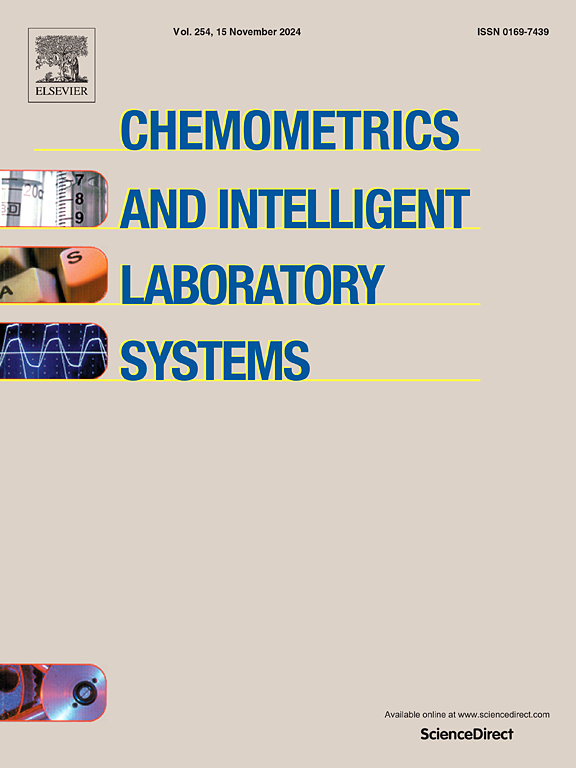基于PCA的目标组合多目标回归及其在OLED制造过程质量预测中的应用
IF 3.8
2区 化学
Q2 AUTOMATION & CONTROL SYSTEMS
Chemometrics and Intelligent Laboratory Systems
Pub Date : 2025-06-16
DOI:10.1016/j.chemolab.2025.105462
引用次数: 0
摘要
本研究的重点是利用多目标回归(MTR)改进有机发光二极管(OLED)制造中的质量预测,即利用主成分分析法(pca)通过目标组合进行MTR。OLED是一种复杂的器件,由多层发光材料堆叠而成,但生产质量难以控制。PCA-C方法通过考虑定义OLED面板颜色和亮度属性的多个质量检测变量(如CIE-x、CIE-y、亮度、Ra和R9)之间的关系来提高预测精度。这种方法还利用了装袋技术。我们的实验将PCA-C与传统的单目标回归器(STR)(如梯度增强(GB)和随机森林(RF))以及PLS2(一种传统的MTR方法)进行了比较,揭示了从小型到大型训练数据的各种条件下准确性的提高。在所有目标变量中都观察到这些改进。基于GB的PCA-C往往显示出最高的准确性。与传统的GB相比,精度提高了10% - 22%。与传统射频相比,基于pca的射频精度也提高了7% - 112%。此外,PCA-C与基本模型的对比实验证实,该方法精度的提高是由于套袋和关系因素的影响。本文章由计算机程序翻译,如有差异,请以英文原文为准。
Multi-Target Regression via Target Combinations using PCA with application to quality prediction in OLED manufacturing process
This study focuses on improving quality prediction in Organic Light Emitting Diode (OLED) manufacturing using multi-target regression (MTR), which is called the MTR via Target Combinations Using Principal Component Analysis method (PCA-C). OLED is a complex device, fabricated by stacking multiple layers of light-emitting materials, but the production quality is difficult to control. The PCA-C method is designed to enhance prediction accuracy by considering relationships among multiple quality inspection variables, such as CIE-x, CIE-y, luminance, Ra, and R9, which define color and luminance attributes of OLED panels. This method also utilizes a bagging technique. Our experiments compare PCA-C with conventional single-target regressors (STR), such as gradient boosting (GB) and random forest (RF), and PLS2, a conventional MTR method, revealing improvements in accuracy across a variety of conditions, from small to large training data. These improvements were observed across all target variables. PCA-C based on GB often showed the highest accuracy. Compared to the conventional GB, the accuracy has been improved by 10 %–22 %. PCA-C based on RF has also improved accuracy by 7 %–112 % compared to conventional RF. Moreover, comparative experiments between PCA-C and its base model confirmed that the improvement in the method's accuracy resulted from the effects of the bagging and relationship elements.
求助全文
通过发布文献求助,成功后即可免费获取论文全文。
去求助
来源期刊
CiteScore
7.50
自引率
7.70%
发文量
169
审稿时长
3.4 months
期刊介绍:
Chemometrics and Intelligent Laboratory Systems publishes original research papers, short communications, reviews, tutorials and Original Software Publications reporting on development of novel statistical, mathematical, or computer techniques in Chemistry and related disciplines.
Chemometrics is the chemical discipline that uses mathematical and statistical methods to design or select optimal procedures and experiments, and to provide maximum chemical information by analysing chemical data.
The journal deals with the following topics:
1) Development of new statistical, mathematical and chemometrical methods for Chemistry and related fields (Environmental Chemistry, Biochemistry, Toxicology, System Biology, -Omics, etc.)
2) Novel applications of chemometrics to all branches of Chemistry and related fields (typical domains of interest are: process data analysis, experimental design, data mining, signal processing, supervised modelling, decision making, robust statistics, mixture analysis, multivariate calibration etc.) Routine applications of established chemometrical techniques will not be considered.
3) Development of new software that provides novel tools or truly advances the use of chemometrical methods.
4) Well characterized data sets to test performance for the new methods and software.
The journal complies with International Committee of Medical Journal Editors'' Uniform requirements for manuscripts.

 求助内容:
求助内容: 应助结果提醒方式:
应助结果提醒方式:


